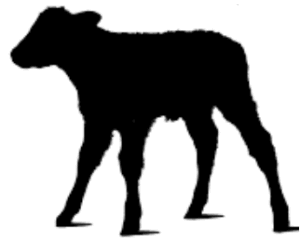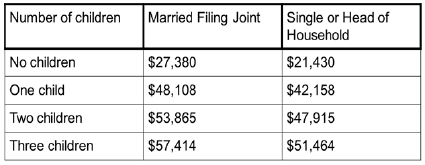

To send a message to an author, click on the author's name at the end of the article.
This Month in Ag Connection | Ag Connection - Other Issues Online

The most critical component in the health of a newborn calf is the timing and amount of colostrum consumed. Colostrum is the first milk produced by the mother and is full of antibodies and more concentrated amounts of protein. Newborn calves need to stand and nurse within the first few hours of life to maximize immunity. Unlike some other mammals, cows do not pass antibodies through the placenta to their offspring during pregnancy. Instead, the intestines of a newborn calf are capable of carrying the antibodies found in the colostrum across the intestinal wall and into the bloodstream after birth. The gut begins to "close" as soon as the calf's first meal is consumed to protect the newborn from pathogens that can also cross the intestinal wall. As a result, fewer antibodies can be absorbed from each meal until gut closure is complete. The window of time for delivery of colostrum generally is 24 hours, but really depends on when the calf first consumes any kind of meal. A calf can still absorb some antibodies at 24 hours if the calf has had nothing to eat. Closure begins immediately after consumption and can also end before the 24-hour mark.
The ideal method for a calf to receive colostrum is through nursing its own dam. A chute can be used to restrain the cow if it is unwilling to let a calf nurse. If a newborn cannot nurse, the cow can be milked and fed to the calf through a bottle or tube, or frozen colostrum from a cow that has previously lost her calf can be used. Calves need about two quarts of colostrum within four to six hours after birth and another two quarts four to six hours after the first feeding. If using previously acquired and frozen colostrum, thaw gently in warm water because thawing rapidly in boiling water will destroy a portion of the antibodies.
If there is no colostrum available, a commercial colostrum replacement product can be used, although they can be expensive. A last resort could be to feed colostrum supplement. Colostrum replacements provide higher levels of antibodies than colostrum supplements. Supplements are effective when the calf receives some colostrum from the dam. Commercial colostrum replacer is more expensive than supplement, but much more effective and worth the cost if there is no colostrum available. Check the label to ensure desired product is being used. Consult with a veterinarian and have supplies ready with a plan in place before this year's calving season starts.
Source: Jenna Monnig, Livestock Specialist
This Month in Ag Connection | Ag Connection - Other Issues Online
The Earned Income Tax Credit (EITC) is for working people who earn less than $57,414. This year, the amount of the credit you could receive is up to $6,728. The amount of the credit depends on:
This refundable tax credit is targeted at low to moderate income workers and their families. The EITC is one of the largest anti-poverty tools in the U.S. As earned income increases, the credit decreases or phases out. A large amount of investment income disqualifies the credit.
The IRS estimates that 20%, or 1 in 5 people eligible for the credit, do not claim it. In the 2020 tax year for Missouri, over 476,000 families received the EITC totaling $1.2 billion. The average amount per family was $2,452. The overall economic impact was $3 billion. Unclaimed dollars for Missourians in 2020 was $300 million.
To determine eligibility for the EITC
Families with no children may qualify for a reduced credit. Children must meet the relationship; age, residency, and joint return tests to qualify for the EITC.
Relationship Test: The child must be the recipient's son, daughter, stepchild, foster child, brother, sister, half-brother, half-sister, step-brother, step-sister, or a descendant of any of them. An adopted child is always treated the same as a biological child.
Age Test: The child must be:
Residency Test: The child must have lived with the recipient in the United States for more than half of the year.
Joint Return Test: The child must not file a joint return for the year, unless they are filing a return only to claim a refund of income tax withheld or estimated taxes paid.
The Child Tax Credit has been expanded for 2021. A child age 0-5, provides a $3,600 credit. A child age 6-17 provides a $3,000 credit. Half the credit was distributed monthly from July to December, unless opted out. The other half will be refunded on the tax return. This credit does not require earned income.
The table below shows income thresholds based on filing status and number of children, if any, to be eligible for the EITC.

Source: Darla Campbell, Ag Business Specialist
This Month in Ag Connection | Ag Connection - Other Issues Online
Ornamentals
Houseplants
Miscellaneous
All Month
Week 1-2
Source: Missouri Botanical Garden
This Month in Ag Connection | Ag Connection - Other Issues Online
This Month in Ag Connection | Ag Connection - Other Issues Online
Following are a list of new and updated publications. All publications are available online at https://extension.missouri.edu/publications or contact your location county extension center.
Planning Budgets:
Corn
Grain Sorghum & Wheat
Soybean
Forages
Industrial Hemp
Dairy
Beef
Sheep & Goats
Swine

This Month in Ag Connection | Ag Connection - Other Issues Online
The following list is for in-person training.
Pre-registration is required with limited seating.
For questions: Valerie Tate (660)-985-5123 or Dhruba Dhakal (573) 581-3231.
Adair County - Jan. 26 @ 10 a.m., or 2 p.m.
MU Extension office 660-665-9866
Boone County - Jan. 24 @ 9 a.m., or 2 p.m.
MU Extension office 573-445-9792
Clark County - Jan. 19 @ TBD 660-727-3339
Knox County - Jan. 24 @ 10 a.m. or 2 p.m.
Greenley Research Center 660-397-2179
Lewis County - Jan. 13 @ 2 p.m. or 6 p.m.
Courtroom 573-767-5273
Linn County - Feb. 1 @ 2 p.m. or 6 p.m.
Forage Systems Research Center 660-895-5123
Macon County - Feb. 7 @ 10 a.m. or 2 p.m. or 6 p.m.
MU Extension office 660-385-2173
Putnam County - Feb. 2 @ 10 a.m. or 2 p.m.
4-H Building 660-947-2705
Schuyler County - Feb. 9 @ 2 p.m.
Courthouse basement 660-457-3469
Scotland County - Jan. 31 @ 10 a.m. or 2 p.m.
Scotland County Fire Dept. 660-465-7255
Sullivan County - Feb. 9 @ 2 p.m.
City Hall Community Room 660-265-4541
Online Training: Jan. 12 @ 1:30 p.m.
To register https://tinyurl.com/PPAT-Jan2022 or call Dhruba at 573-581-3231
Publishing Information
Ag Connection is published monthly for Northeast and Central areas of Missouri producers and is supported by the University of Missouri Extension, the Missouri Agricultural Experiment Station, and the MU College of Agriculture, Food and Natural Resources. Managing Editor: Mary Sobba.